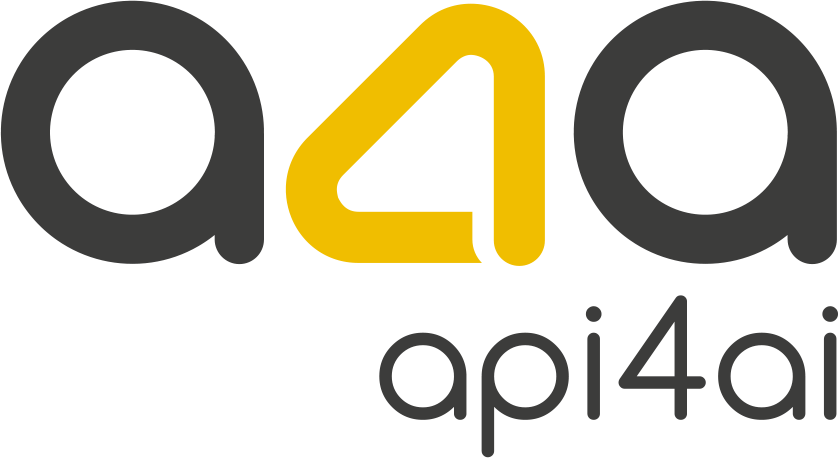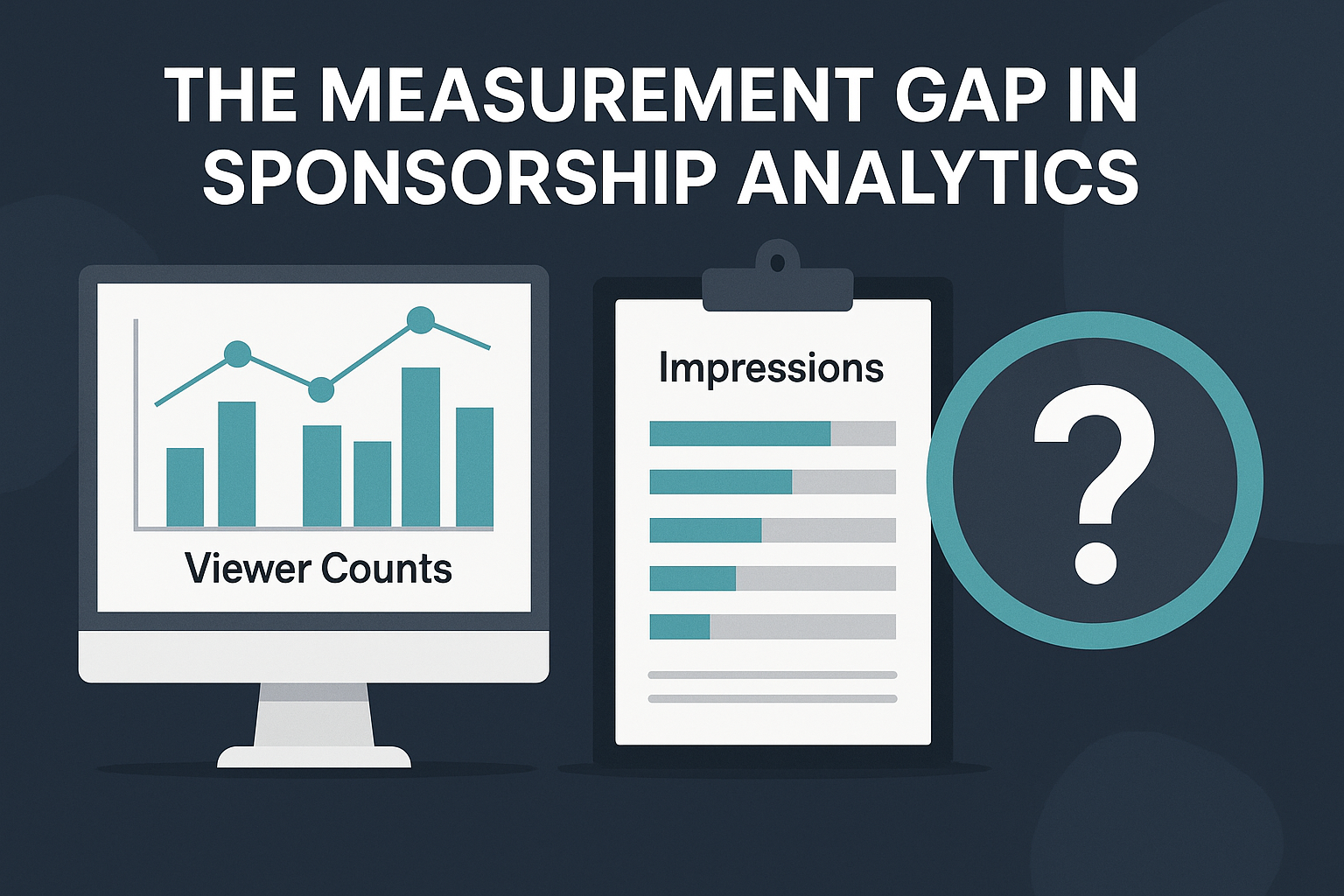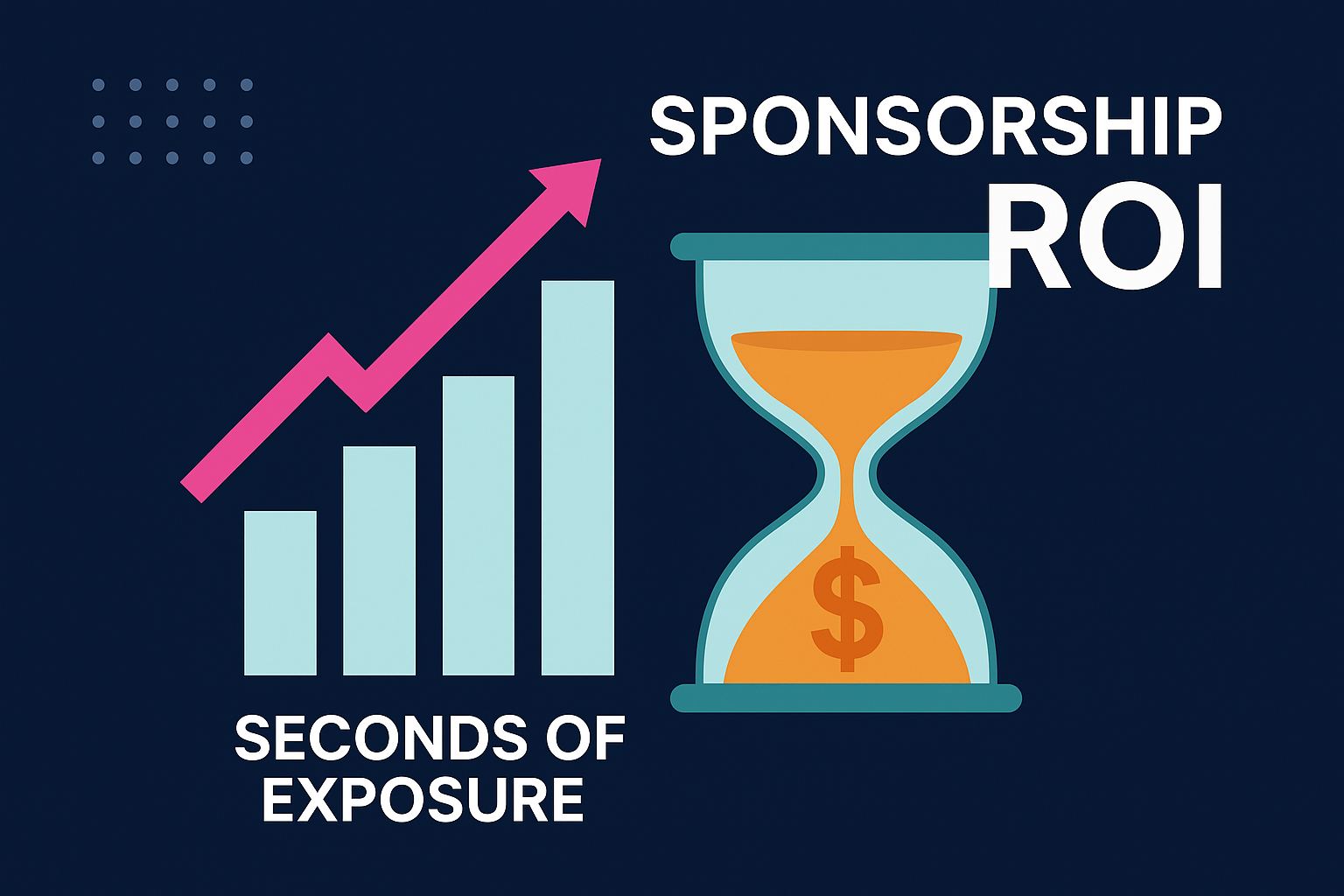Quantifying Sponsorship ROI with Visual Brand Tracking
Introduction
Sponsorships remain one of the most powerful levers for building brand equity, especially in sports, entertainment, and large-scale events. Yet for all the money invested, many executives still find themselves relying on outdated metrics — viewer counts, estimated impressions, and reach forecasts that offer, at best, a blurred picture of impact. These numbers may look good in a quarterly report, but they don’t answer the question every board member eventually asks: what did we actually get in return?
The challenge lies in the fact that traditional sponsorship measurement focuses on audience size rather than on logo visibility. Knowing that millions watched an event is not the same as knowing how many seconds your logo was on screen, how prominent it was, or how frequently it appeared compared to competitors. This lack of granularity leaves negotiations for renewals, pricing, and ROI discussions vulnerable to guesswork.
Today, however, artificial intelligence is changing the sponsorship equation. Through visual brand tracking — the automated detection and measurement of brand logos within live broadcasts, recorded footage, and even fan-generated content — marketers can move beyond impression counts to tangible visibility metrics. Instead of vague reach estimates, executives can access hard data such as exposure duration, on-screen share of voice, and placement prominence.
This shift represents more than an incremental improvement in reporting. It is a transformation in how sponsorship value is defined, communicated, and optimized. With exposure time tied directly to return on investment, sponsorships can be evaluated with the same rigor as digital advertising campaigns. That opens the door to performance-driven negotiations, smarter allocation of budgets, and more confident board-level decision-making.
The following sections will explore the current gaps in sponsorship measurement, the mechanics of visual brand tracking, and the strategic opportunities it unlocks for brands that want not just visibility — but measurable impact.
The Measurement Gap in Sponsorship Analytics
For decades, the sponsorship industry has leaned on a familiar set of indicators — broadcast ratings, estimated impressions, social media mentions, and post-event surveys. These numbers provide a surface-level snapshot of potential reach, but they rarely withstand the scrutiny of financial officers or board members who want to see direct correlations between investment and impact.
The central weakness is that traditional sponsorship metrics measure audience size, not logo visibility. Knowing that 50 million people tuned in to a sporting event does not prove that your brand received proportional exposure. Your logo may have been placed in a corner that camera operators rarely focused on. It might have appeared for just a few fleeting seconds, or worse, been overshadowed by competitor signage. In short: the audience was there, but your brand’s visibility was not guaranteed.
Another gap lies in the subjectivity of measurement. Many sponsorship reports still rely on manual counting, human observation, or highlight reels selectively compiled to favor perceived value. This approach introduces bias, slows down reporting, and makes it difficult for executives to make real-time decisions. In contrast to the precision of digital marketing — where impressions, clicks, and conversions are tracked down to the second — sponsorship analytics has remained a world of estimates.
This discrepancy creates a trust deficit between sponsors and rights holders. Sponsors often suspect they are paying for theoretical exposure, while rights holders struggle to justify pricing without hard evidence. Renewal discussions become adversarial rather than collaborative, driven more by negotiation tactics than by performance data.
Furthermore, the lack of granular metrics prevents brands from fully optimizing their sponsorship spend. Without knowing which placements generated the longest on-screen presence, or which camera angles delivered the highest visibility, marketers cannot refine strategy mid-campaign. They are left waiting until after the event to make adjustments — by which point the opportunity to maximize ROI has already passed.
In an environment where CFOs demand accountability and CMOs are expected to deliver measurable growth, this gap is no longer sustainable. The market is shifting toward evidence-based sponsorship valuation, where visibility is quantified in seconds, share of screen, and comparative prominence. This evolution is not just about better measurement — it is about aligning sponsorships with the same performance-driven expectations that define every other marketing channel.
How Visual Brand Tracking Bridges the Gap
The shortcomings of traditional sponsorship measurement have created a growing demand for solutions that deliver evidence, not estimates. This is where visual brand tracking — powered by computer vision and artificial intelligence — changes the game. Instead of relying on assumptions about audience size, it measures exactly how long, how clearly, and how prominently a brand logo appears in video or imagery.
At its core, the process uses AI-driven logo recognition to scan every frame of a broadcast, event recording, or fan-generated photo. When a logo is detected, the system tracks it over time and records key parameters: duration of visibility, percentage of screen occupied, clarity of placement, and whether it is positioned in the center of focus or in the periphery. Unlike manual observation, this process is automated, scalable, and consistent — removing human bias from measurement.
The advantages are immediate and tangible:
Real-time visibility metrics
Instead of waiting weeks for post-event reports, executives can access near-instant analytics on logo exposure. This allows brands to make mid-campaign adjustments, such as renegotiating camera angles, repositioning signage, or amplifying underexposed assets.Consistency across channels
Whether a logo appears in a live broadcast, a replay on streaming platforms, or a fan’s photo uploaded to social media, AI applies the same recognition standard. This unifies measurement across fragmented media landscapes and captures exposure that previously went uncounted.Scalability at enterprise level
What would take human teams countless hours of reviewing footage can now be processed in minutes by an automated system. For global sponsors investing across multiple sports, festivals, or markets, this scalability ensures that every second of exposure is captured and logged.Credibility in executive reporting
Exposure measured in seconds and share-of-screen percentages is data that stands up to CFO scrutiny. It transforms sponsorship ROI from a narrative of potential reach into a performance metric that can be compared directly with digital ad spend or other marketing investments.
By bridging the measurement gap, visual brand tracking elevates sponsorships from art to science. For the first time, boards and C-suites can see evidence that a logo was not just placed but actually seen — measured down to the second. This creates a stronger foundation for pricing, renewals, and budget allocations, while reducing the uncertainty that has historically surrounded sponsorship valuation.
In practice, this approach is already being deployed through brand recognition APIs and custom computer-vision solutions, which integrate seamlessly into sponsorship analytics platforms. By embedding this capability into their measurement stack, organizations not only gain transparency but also unlock a strategic edge in negotiations and portfolio management.
From Seconds of Exposure to Sponsorship ROI
Executives rarely approve multimillion-dollar sponsorships on faith alone. At the board level, every investment must connect to measurable business outcomes. This is where the leap from exposure time to return on investment (ROI)becomes critical. Visual brand tracking provides the missing link: turning raw visibility data into financial intelligence.
Exposure as a Measurable Currency
In digital advertising, brands pay by impression, click, or conversion. Sponsorships, by contrast, have historically lacked an equivalent unit of value. By measuring seconds of logo visibility, companies now gain a currency that translates directly into pricing models and ROI calculations. For example, a five-second appearance during prime broadcast time carries more value than a fleeting half-second in the background. This allows sponsors to move from “flat fee” arrangements to performance-based valuations.
Beyond Time: Quality of Exposure
Not all exposure seconds are equal. Computer vision systems can also assess:
Share of screen: how much visual real estate the logo occupies.
Placement prominence: whether the logo is in the center of focus or peripheral.
Context of appearance: whether exposure occurs during key moments — such as a goal, podium ceremony, or close-up shot — that draw heightened audience attention.
These refinements enable executives to assign weighted value to different types of visibility, ensuring sponsorship ROI reflects not just quantity but also quality.
Linking Visibility to Media Value
The next step is translating exposure metrics into Estimated Media Value (EMV). By comparing sponsorship visibility to the cost of equivalent advertising slots, brands can calculate how much their exposure was worth in monetary terms. For instance, if a logo received 30 seconds of high-profile exposure, and comparable ad space would have cost $250,000, executives can anchor sponsorship ROI in a familiar financial framework.
Enabling Smarter Negotiations and Renewals
When sponsors walk into renewal meetings armed with second-by-second exposure data, the conversation changes. Instead of debating estimated impressions, they can demonstrate exactly what was delivered — and demand pricing that reflects performance. Rights holders also benefit, as they can prove value with hard evidence, strengthening long-term partnerships. This data-driven transparency shifts negotiations from guesswork to collaboration.
Unlocking Dynamic Sponsorship Models
With granular visibility data, sponsorships can evolve toward dynamic pricing — similar to programmatic digital advertising. Contracts may specify cost-per-second of exposure, bonuses for appearing during high-impact moments, or flexible fees tied to share-of-voice metrics. This transforms sponsorship from a static investment into a flexible, performance-optimized channel.
For C-Level leaders, the implication is clear: sponsorships no longer have to be defended as brand-building “intangibles.” They can now be evaluated with the same rigor as other marketing investments, expressed in time, value, and ROI. That shift makes sponsorship not only easier to justify internally but also far more powerful as a strategic lever for growth.
Beyond Broadcasts: Capturing Organic & Fan-Generated Exposure
Broadcast visibility is only part of the sponsorship value equation. In today’s fragmented media environment, a brand’s exposure often extends far beyond what television cameras capture. Fans armed with smartphones, influencers posting from the stands, and journalists sharing highlight clips all create an organic layer of visibility that multiplies the impact of sponsorships. Yet most traditional measurement frameworks ignore it completely.
The Untapped Dimension of Sponsorship ROI
When an attendee uploads a photo of a goal celebration or a podium ceremony to social media, your logo may appear in the background. That image can be shared thousands of times, generating exposure that rivals official broadcasts. For global sponsors, these fan-generated impressions can account for a significant share of total brand visibility — sometimes even surpassing formal media placements.
However, this exposure is rarely tracked. Mentions without hashtags, reposts without tags, and organic imagery without explicit text references slip through conventional monitoring tools. Brands end up underreporting their true visibility, weakening the case they can present to leadership or rights holders.
Visual Listening: Seeing What Text-Based Analytics Miss
This is where visual listening becomes essential. By applying logo detection and image recognition to user-generated content, brands can measure exposure even when their name is never mentioned in text. For example:
A fan’s TikTok video showing a stadium banner.
An Instagram story featuring a branded backdrop.
A YouTube highlight reel where your logo appears on the field perimeter.
With AI-powered brand recognition, each of these moments can be logged, timed, and valued. This transforms what was once invisible exposure into measurable, reportable ROI.
Extending Value Across the Sponsorship Lifecycle
Capturing organic exposure also enhances the long-tail value of sponsorships. Logos that appear in photos and videos continue to circulate online long after the event ends. A single viral post can extend sponsorship visibility weeks or months beyond the original broadcast, compounding ROI without additional cost.
Competitive Benchmarking in the Social Arena
Equally important, visual tracking allows sponsors to compare their share of organic visibility against competitors. If rival brands are consistently appearing in fan posts more frequently, it may signal stronger on-site placements or higher engagement. This intelligence enables executives to refine sponsorship strategies and negotiate more effectively for future activations.
A More Complete Picture for the C-Suite
By combining broadcast exposure with fan-generated visibility, brands gain a holistic view of sponsorship impact. This dual-layer measurement — formal plus organic — delivers a truer accounting of ROI and elevates sponsorship reporting to the same evidence-based standard expected in digital marketing. For executives, it provides the confidence that every dimension of visibility is being captured, valued, and leveraged for strategic decision-making.
Strategic Value for Executives & Sponsorship Decision-Makers
Sponsorships have long been seen as a blend of marketing art and science — valuable for visibility and brand association, but difficult to quantify with financial precision. With visual brand tracking, that ambiguity is replaced by evidence-based insights that resonate directly with the priorities of the boardroom.
Elevating Sponsorship to a Performance-Driven Investment
When visibility is measured in seconds, share of screen, and prominence of placement, sponsorships can be evaluated with the same rigor as digital campaigns or media buys. This elevates sponsorships from discretionary spend to a performance-driven investment category, making them easier to defend in budget discussions and more attractive for future scaling.
Strengthening Negotiation Power
Detailed visibility data transforms renewal conversations. Instead of debating impression estimates, sponsors can enter negotiations with indisputable evidence of delivered exposure. Rights holders benefit as well, since they can justify pricing based on transparent performance metrics. This mutual accountability fosters stronger partnerships, reduces friction, and ensures fair market value.
Identifying Under-Leveraged Assets
Granular measurement reveals which assets are overperforming — and which are underperforming. For example, perimeter signage may deliver far greater visibility than branded apparel, or certain camera angles may systematically favor competitor placements. These insights enable executives to reallocate spend dynamically, ensuring every dollar invested maximizes brand visibility and ROI.
Enabling Competitive Intelligence
Visual tracking does not stop with a brand’s own logos. The same systems can capture competitor exposure, creating a benchmark for share of visual voice within an event or sponsorship category. For executives, this intelligence is invaluable: it shows whether a brand is leading or lagging in visibility and informs strategy for future bidding or placement optimization.
Fueling Enterprise-Wide Decision-Making
Beyond the marketing function, visibility metrics support cross-departmental decisions:
Finance gains clarity on ROI to validate sponsorship spend.
Strategy teams can align sponsorships with broader growth objectives.
Sales can leverage exposure evidence to attract co-marketing partners.
Compliance and legal can use documented metrics for audit and contract validation.
Scalable Implementation Through APIs
Critically, this level of intelligence is not limited to organizations with in-house AI teams. Brand recognition APIs and custom computer-vision solutions can integrate directly into existing sponsorship analytics stacks. This allows enterprises to deploy advanced measurement capabilities quickly, without disrupting current workflows, and scale globally across markets and sports.
Executive-Level Payoff
For C-Level leaders, the strategic payoff is clear:
Sponsorships become transparent, measurable, and defensible.
Negotiations shift from subjective claims to performance evidence.
Competitive positioning is grounded in real-world visibility, not assumptions.
Budgets are allocated with confidence, ensuring long-term ROI growth.
In short, visual brand tracking transforms sponsorship from a “soft” brand-building initiative into a hard metric of competitive advantage — giving executives both the accountability they demand and the strategic edge they seek.
Conclusion — Redefining Sponsorship ROI for the Evidence-Driven Era
Sponsorship has always promised visibility, association, and influence. The challenge has been proving it. For decades, executives have relied on impressions, ratings, and anecdotal reports that, while persuasive, often lacked the precision demanded at the board level. Today, that gap can finally be closed.
Visual brand tracking marks a turning point in sponsorship valuation. By measuring exposure in seconds, quantifying share of screen, and capturing both broadcast and organic visibility, it elevates sponsorship from a “good story” to a defensible business investment. CFOs can validate spend with confidence, CMOs can justify renewals with evidence, and CEOs can see sponsorships positioned not as discretionary branding but as strategic growth levers.
The implications reach far beyond measurement. With transparent visibility data:
Negotiations become performance-driven rather than speculative.
Underperforming assets are identified early, ensuring smarter allocations.
Competitive intelligence becomes actionable, enabling brands to outmaneuver rivals in the battle for attention.
ROI becomes clear, comparable, and scalable — on par with digital advertising benchmarks.
Just as importantly, visual tracking ensures that sponsorship impact is no longer confined to broadcast airtime. The organic layer of fan-generated content — once overlooked — is now measurable, extending brand exposure long after the event and amplifying value without incremental cost.
For C-Level leaders, the message is simple: the days of treating sponsorship as an unmeasurable “black box” are over. With AI-powered brand recognition and visual analytics, sponsorships can now be audited, optimized, and defended in the same language as other investments — time, value, and return.
The organizations that embrace this shift will not only negotiate smarter deals but also unlock a sustainable competitive edge in a market where attention is fragmented and every second counts. Those that remain tied to outdated metrics risk undervaluing their assets, overspending in negotiations, and missing the full potential of their sponsorship portfolios.
The next era of sponsorship is not about being seen — it’s about proving it. And in that transformation, visual brand tracking is the bridge from perception to performance, from assumption to accountability.






